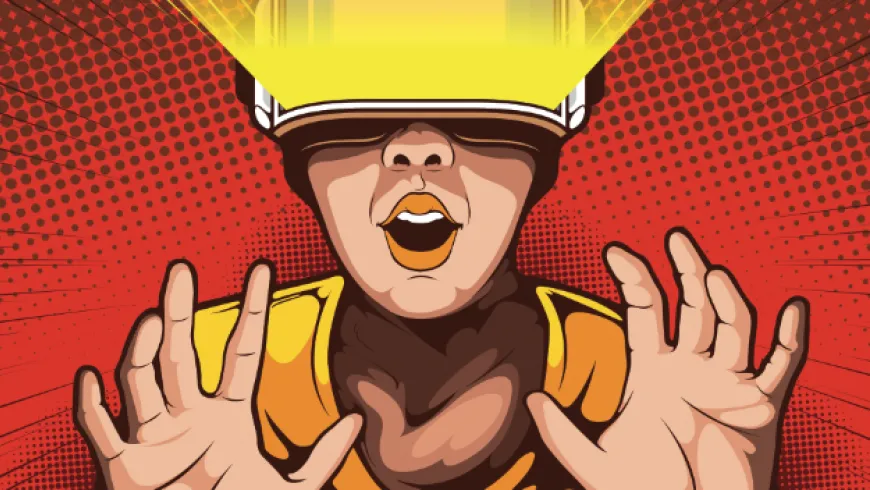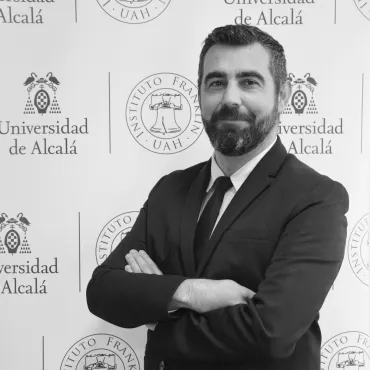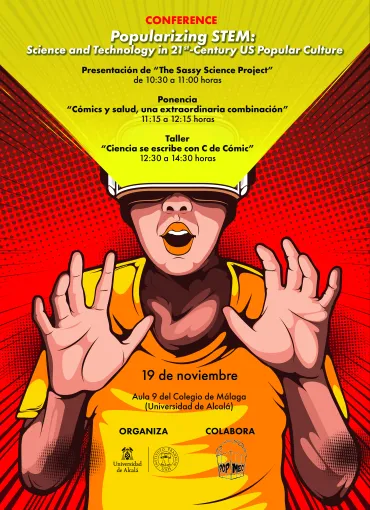Conference "Popularizing STEM: Science and Technology in 21st-Century US Popular Culture"
In 1959, British physicist and novelist C.P. Snow delivered a lecture in which he highlighted the increasing intellectual separation between the humanities and the sciences—the emergence of “two cultures.” While his arguments were clearly anchored in British society, he nevertheless suggested that this emerging chasm was “a problem of the entire West.” To present the argument in a perhaps even more exaggerated manner than Snow did: Not even the most highly educated humanities scholars can comprehend basic physics, while what we today would refer to as STEM professors don’t read “highbrow” literature. Snow came to understand that the situation was not quite as black-and-white as he suggested, which is why he anticipated the emergence of a “third culture” a few years later.
Of course, much has happened in the sixty-plus years since Snow’s iconic lecture. And, indeed, scholars such as Rachel Holland have diagnosed the emergence of a “third culture” and, along with it, third-culture cultural objects. In her recent book Contemporary Fiction and Science (2019), Holland argues that the increasing presence of science in fiction (and, by extension, popular culture) “is, in part, a response to the upsurge in interest […] in popular science.” Holland identifies a “new strand of fiction” that engages with “elements of popular science in a number of ways. These include: researching and relaying information gleaned from scientific publications; challenging or promoting ideas presented by science writers; exploring the moral and ethical implications of these ideas; and testing the limits and capabilities of the novel in relation to scientific discourse.” As some of the elements in this list suggest, science is a tool of power; science is purported to be objective and, hence, often serves as a purveyor of Truth. As such, it has been (ab)used in a variety of ways in the course of history–among others, scientific curiosity drove (and technology made possible) the exploration and colonization of foreign lands, science explained the inferiority of non-white peoples, iconic Nazi doctor Josef Mengele experimented on humans in the name of scientific progress, etc.
Holland’s elaborations also indicate that science and technology have taken an integral place in global society—and the ongoing pandemic has brought this process to the fore. Due to the proliferation of science and technology on television, in films, video games, and other popular media and the attendant use of YouTube and other platforms by STEM fields, it is important to study the dynamic and complex interrelationship between science & technology and popular culture. Indeed, science & technology has infiltrated popular culture. However, this is not a one-way street! “The cultural products that scientific discoveries and developments sparked have become significant parts of the discourse surrounding science,” as Steven Gil rightfully stresses in the opening editorial of the Journal of Science & Popular Culture.
We are particularly interested in presentations that seek to engage with questions of intersectional discrimination in STEM representations in popular culture, spanning from cultural products aimed at dissemination and debate on STEM to texts such as films, TV series, comics and graphic novels, genre fiction, video games, new media narratives.
Suggested fields of analysis might include but are not limited to:
- STEM dissemination in popular culture: storytelling strategies, (in)accuracy, multimedia programs and projects promoting access, flexibility, and adaptability in STEM education and knowledge, deconstructing the existing barriers within the field and building equality in legitimacy
- Interrelationship between STEM and Popular Culture: Using popular culture to teach/educate on STEM (i.e., in STEM programs) and teaching about STEM via popular culture
- Economic discourses and the challenges of capitalism related to STEM in US popular culture and media
- Representation of STEM in popular culture aimed at children and young adults
- Intersectionality versus marginalization in the dissemination and communication of science and technology
- STEM and Gender Studies: the portrayal of masculine, feminine, and gender non-conforming individuals in STEM-centered popular media narratives
- Science, tech, and race/ethnicity: Afro(Latinx), Indigenous, and Chicana Futurism(s), minority perspectives, alternative narratives, borderland spaces
- Digital technology and virtual realities as safe spaces for marginalized groups
- The use of science and technology in depictions of the future as critiques or reevaluations of current realities: tech-noir and sci-fi utopias, dystopias, post/apocalyptic scenarios, and retrofuturism
- Cyborgs, AI, and the human: representations, conflicts, and horrific developments
- Health and technology: care robots and the representation of disabilities, human aging, biomedical issues
- Representations of surveillance, biometrics, and biological citizenship
- Tech, science, and the (non)human body: narratives related to experimentation, bioethics, artificial monstrosity, transhumanism, biopunk
- Pop depictions of STEM: (in)accuracy, “prediction” of future technologies, breaking down the science and tech behind superhero narratives
Deadline for submission: August 1, 2021.
Submit your abstract proposal (~ 300 words) at popmec.stem@gmail.com as an attachment, including name, affiliation if any, and contact email. Depending on the proposals and participants’ response, an editorial project might originate from the conference.
The conference will take place on the days 15-19 November 2021 in mixed format:
- ONLINE | panels and main keynotes
- IN PRESENCE at Universidad de Alcalá, historical campus | workshop/seminars (in particular focused on creators, graphic medicine, dissemination, and STEM communication), possibly keynote screening. If it will be feasible considering the changing COVID-19 related measures, we will allow selected panels to be carried out in person (if their participants wish to do so).
Participation fees:
- FREE for PopMeC members
- Non-members: 15€ students / non-tenured / unwaged / retired, 25€ regular
Day: November, 19th, 2021
Place: Room 9. Facultad de Filosofía y Letras de la Universidad de Alcalá. Colegio de Málaga. C/Colegios, 2. 28801. Alcalá de Henares.
Program:
- Sassy Science Project – de 10:30 to 11:00 a.m.
- Presentation by Mario Peláez-Fernández (SassyScience)
- Cómics y salud, una extraordinaria combinación – 11:15 to 12:15 p.m.
- Plenary Mónica Lalanda
- Ciencia se escribe con C de Cómic – 12:30 to 2:30 p.m.
- Workshop by Miriam Rivera y Jesús Sánchez Ruiz
Deadline for submission: August 1, 2021.
Conference: November 15-19, 2021.
- Michael Fuchs (coordinador)
- Laura Álvarez Trigo
- Paula Barba Guerrero
- Paul Mitchell
- Dina Pedro
- Erika Tiburcio
Miriam Rivera is a science communicator specialising in comic format. Graduate in Human Biology and Master's Degree in Scientific, Medical and Environmental Communication. Technical secretary and communications officer in the Catalan Association of Scientific Communication. With her Biomiics she helps communicators, popularisers, scientists and their organisations to make their target audience aware of their advances through stories in a visual, eye-catching and understandable but rigorous format: the comic. He has worked for clients such as the Vall d'Hebron Oncology Institute (VHIO), King's College London, Roche and the Spanish Association Against Cancer (AECC), and has given workshops on scientific comics for professionals in the scientific sector.
Jesús Sánchez Ruiz is a researcher, science communicator and scientific cartoonist through his project Laboratoons. PhD in Molecular Biology by the Universidad Autónoma de Madrid. He has worked in laboratories at the National Biotechnology Centre (CNB), the National Centre for Oncological Research (CNIO) and the National Centre for Cardiovascular Research (CNIC). He is currently project manager at the CRIS Cancer Foundation. He is a collaborator of the scientific dissemination community Scenio.
Monica Lalanda is s doctor, cartoonist, and coordinator of the first master on graphic medicine in Spain.
Mario Pelaez-Fernandez, also known as SassyScience Sassy Science, is a postdoctoral researcher at the Instituto de Nanociencia y Materiales de Aragón. Her research focuses on the intersection of electron microscopy and nanomaterials. Self-described as “bisexual, non-binary and full of clownery”, during her PhD within the Marie Slodowska-Curie project “Enabling Excelence” she decided to merge her passion for drag and her passion for science to create The SassyScience Project, a project that uses drag as a medium to popularize STEM and the people behind it. This popularization is conceived from the very beginning with a specific targeting of underrepresented groups in STEM.








